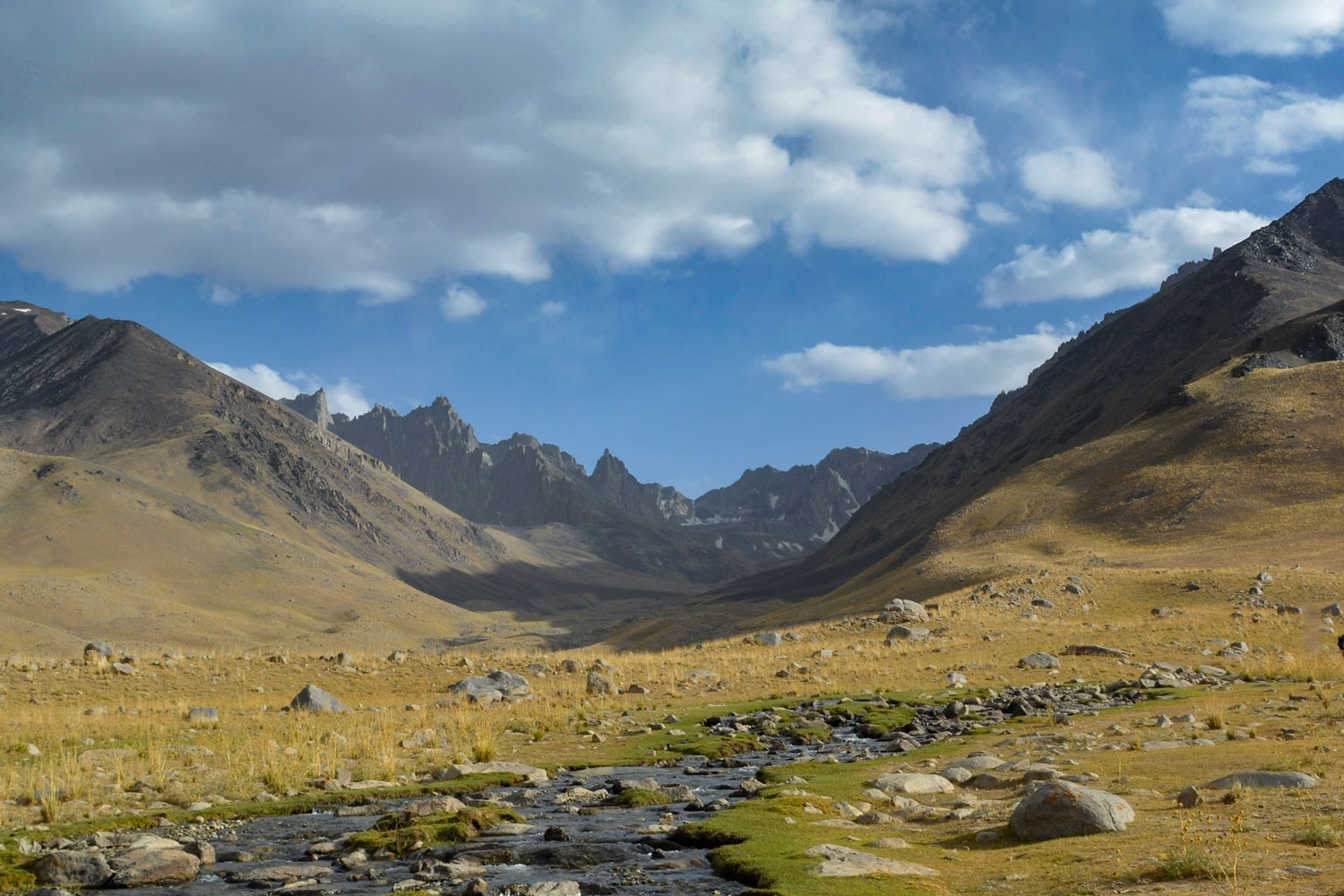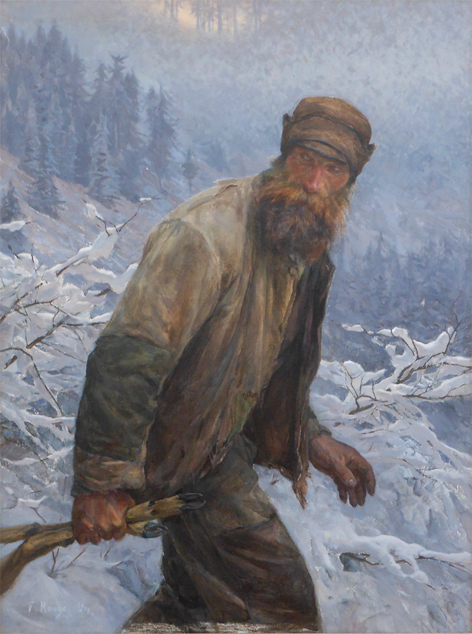|
Pallas Cat
The Pallas's cat (''Otocolobus manul'', also known as the manul, is a small wild Felidae, cat with long and dense light grey fur. Its rounded ears are set low on the sides of the head. Its head-and-body length ranges from with a long bushy tail. It is well camouflaged and adapted to the cold continental climate in its native range, which receives little rainfall and experiences a wide range of temperatures. The Pallas's cat's pupils are rounded, a unique feature among the Felinae. The Pallas's cat was first described in 1776 by Peter Simon Pallas, who observed it in the vicinity of Lake Baikal. In the early 19th century, it was reported to occur in Tibet, and in the Transcaspian Region in the early 20th century. To date, it has been recorded across a large areal extent, albeit in widely spaced sites in the Caucasus, Iranian Plateau, Hindu Kush, parts of the Himalayas, Tibetan Plateau, Altai-Sayan region and South Siberian Mountains. It inhabits rocky montane grasslands and shru ... [...More Info...] [...Related Items...] OR: [Wikipedia] [Google] [Baidu] |
Rotterdam Zoo
( ''Blijdorp Zoo''), officially Rotterdam Zoo, is a zoo located in the northwestern part of Rotterdam. It is one of the oldest zoos in the Netherlands, and has been operated by the ("Royal Rotterdam Zoo Foundation"). Divided into several zoogeographic regions, the 26-hectare (64.25-acre) Blijdorp Zoo boasts well over 180 species. It also has a shop, multiple cafes, and an information centre. The zoo is a member of the Dutch Zoo Federation (NVD) and the European Association of Zoos and Aquaria (EAZA). In 2007, it celebrated its 150th anniversary. History In 1855, a garden was set up for pheasants and waterfowl in the center of Rotterdam, near the Kruiskade. It was a success and on May 18, 1857 the 'Rotterdamsche Diergaarde' was opened as a sequel. The first director was the animal trainer Henri Martin. The same year the 'Vereniging Rotterdamsche Diergaarde' was founded. In 1932 it was decided to reorganize the zoo. In 1937 it was decided to move the zoo to a new location. The ... [...More Info...] [...Related Items...] OR: [Wikipedia] [Google] [Baidu] |
Montane Grasslands And Shrublands
Montane grasslands and shrublands is a biome defined by the World Wildlife Fund. The biome includes high elevation grasslands and shrublands around the world. The term "montane" in the name of the biome refers to "high elevation", rather than the ecological term which denotes the region below treeline. This biome includes high elevation (montane and alpine) grasslands and shrublands, including the puna and páramo in South America, subalpine heath in New Guinea and East Africa, steppes of the Tibetan plateaus, as well as other similar subalpine habitats around the world. The plants and animals of tropical montane páramos display striking adaptations to cool, wet conditions and intense sunlight. Around the world, characteristic plants of these habitats display features such as rosette structures, waxy surfaces, and abundant pilosity. The páramos of the northern Andes are the most extensive examples of this habitat type. Although ecoregion biotas are most diverse in the And ... [...More Info...] [...Related Items...] OR: [Wikipedia] [Google] [Baidu] |
Scientific Name
In taxonomy, binomial nomenclature ("two-term naming system"), also called nomenclature ("two-name naming system") or binary nomenclature, is a formal system of naming species of living things by giving each a name composed of two parts, both of which use Latin grammatical forms, although they can be based on words from other languages. Such a name is called a binomial name (which may be shortened to just "binomial"), a binomen, name or a scientific name; more informally it is also historically called a Latin name. The first part of the name – the '' generic name'' – identifies the genus to which the species belongs, whereas the second part – the specific name or specific epithet – distinguishes the species within the genus. For example, modern humans belong to the genus ''Homo'' and within this genus to the species ''Homo sapiens''. ''Tyrannosaurus rex'' is likely the most widely known binomial. The ''formal'' introduction of this system of naming species is credit ... [...More Info...] [...Related Items...] OR: [Wikipedia] [Google] [Baidu] |
Captive Breeding
Captive breeding, also known as captive propagation, is the process of plants or animals in controlled environments, such as wildlife reserves, zoos, botanic gardens, and other conservation facilities. It is sometimes employed to help species that are being threatened by the effects of human activities such as climate change, habitat loss, fragmentation, over hunting or fishing, pollution, predation, disease, and parasitism. For many species, relatively little is known about the conditions needed for successful breeding. Information about a species' reproductive biology may be critical to the success of a captive breeding program. In some cases a captive breeding program can save a species from extinction, but for success, breeders must consider many factors—including genetic, ecological, behavioral, and ethical issues. Most successful attempts involve the cooperation and coordination of many institutions. History Captive breeding techniques began with the first human do ... [...More Info...] [...Related Items...] OR: [Wikipedia] [Google] [Baidu] |
List Of Zoos In Japan
This is a partial list of zoos in Japan. For aquaria, see List of aquaria in Japan. Such facilities include zoos, safari parks, animal theme parks, aviaries, butterfly zoos, and reptile centers, as well as wildlife sanctuaries and nature reserves where visitors are allowed. Aichi Prefecture *Higashiyama Zoo and Botanical Gardens, Nagoya *Japan Monkey Centre, Inuyama, Aichi * Okazaki Higashi Park Zoo, Okazaki, Aichi * Toyohashi Zoo & Botanical Park, Toyohashi, Aichi * Toyota City Kuragaike-Park, Toyota, Aichi Akita Prefecture *Akita Omoriyama Zoo, Akita, Akita Chiba Prefecture *Chiba Zoological Park, Chiba, Chiba *Ichihara Elephant Kingdom, Ichihara, Chiba *Ichikawa Zoological & Botanical Garden, Ichikawa, Chiba *Mother Farm, Futtsu, Chiba Ehime Prefecture * Tobe Zool. Park of Ehime Prefecture, Iyo, Ehime Fukui Prefecture * Sabae Nishiyama Park Zoo, Sabae, Fukui Fukuoka Prefecture * Assuran Bird House, Onojo *Fukuoka Municipal Zoo and Botanical Garden, Fukuoka * Itozu ... [...More Info...] [...Related Items...] OR: [Wikipedia] [Google] [Baidu] |
List Of Zoos By Country
This is a list of zoological gardens (zoos) around the world. For aquaria, see List of aquaria. For dolphinariums, see List of dolphinariums. For an annotated list of defunct zoos and aquariums, see List of former zoos and aquariums. Zoos are primarily dry facilities where animals are kept within enclosures and displayed to the public, and in which they may also be bred. Such facilities include zoos, safari parks, animal theme parks, aviaries, butterfly zoos and reptile centers, as well as wildlife sanctuaries and nature reserves where visitors are allowed. Africa Algeria *Algiers Zoo – Algiers *Jijel Zoo – Jijel *Oran Zoo – Oran Burkina Faso *Ouagadougou Zoo – Ouagadougou Cameroon *Mvog-Betsi Zoo – Yaoundé Congo, Democratic Republic of the * Parc Zoologique de Lubumbashi Lubumbashi *Zoo National de Kinshasa – Kinshasa Congo, Republic of the *Brazzaville Zoo – Brazzaville Ivory Coast * Abidjan Zoo – Abidjan Egypt *Alexandria Zoo – Alexandria Zoo * Afri ... [...More Info...] [...Related Items...] OR: [Wikipedia] [Google] [Baidu] |
Mining
Mining is the extraction of valuable minerals or other geological materials from the Earth, usually from an ore body, lode, vein, seam, reef, or placer deposit. The exploitation of these deposits for raw material is based on the economic viability of investing in the equipment, labor, and energy required to extract, refine and transport the materials found at the mine to manufacturers who can use the material. Ores recovered by mining include metals, coal, oil shale, gemstones, limestone, chalk, dimension stone, rock salt, potash, gravel, and clay. Mining is required to obtain most materials that cannot be grown through agricultural processes, or feasibly created artificially in a laboratory or factory. Mining in a wider sense includes extraction of any non-renewable resource such as petroleum, natural gas, or even water. Modern mining processes involve prospecting for ore bodies, analysis of the profit potential of a proposed mine, extraction of the desired materials, an ... [...More Info...] [...Related Items...] OR: [Wikipedia] [Google] [Baidu] |
Habitat Fragmentation
Habitat fragmentation describes the emergence of discontinuities (fragmentation) in an organism's preferred environment (habitat), causing population fragmentation and ecosystem decay. Causes of habitat fragmentation include geological processes that slowly alter the layout of the physical environment (suspected of being one of the major causes of speciation), and human activity such as land conversion, which can alter the environment much faster and causes the extinction of many species. More specifically, habitat fragmentation is a process by which large and contiguous habitats get divided into smaller, isolated patches of habitats. Definition The term habitat fragmentation includes five discrete phenomena: * Reduction in the total area of the habitat * Decrease of the interior: edge ratio * Isolation of one habitat fragment from other areas of habitat * Breaking up of one patch of habitat into several smaller patches * Decrease in the average size of each patch of habitat ... [...More Info...] [...Related Items...] OR: [Wikipedia] [Google] [Baidu] |
Poaching
Poaching has been defined as the illegal hunting or capturing of wild animals, usually associated with land use rights. Poaching was once performed by impoverished peasants for subsistence purposes and to supplement meager diets. It was set against the hunting privileges of nobility and territorial rulers. Since the 1980s, the term "poaching" has also been used to refer to the illegal harvesting of wild plant species. In agricultural terms, the term 'poaching' is also applied to the loss of soils or grass by the damaging action of feet of livestock, which can affect availability of productive land, water pollution through increased runoff and welfare issues for cattle. Stealing livestock as in cattle raiding classifies as theft, not as poaching. The United Nations' Sustainable Development Goal 15 enshrines the sustainable use of all wildlife. It targets the taking of action on dealing with poaching and trafficking of protected species of flora and fauna to ensure their avail ... [...More Info...] [...Related Items...] OR: [Wikipedia] [Google] [Baidu] |
IUCN Red List
The International Union for Conservation of Nature (IUCN) Red List of Threatened Species, also known as the IUCN Red List or Red Data Book, founded in 1964, is the world's most comprehensive inventory of the global conservation status of biological species. It uses a set of precise criteria to evaluate the extinction risk of thousands of species and subspecies. These criteria are relevant to all species and all regions of the world. With its strong scientific base, the IUCN Red List is recognized as the most authoritative guide to the status of biological diversity. A series of Regional Red Lists are produced by countries or organizations, which assess the risk of extinction to species within a political management unit. The aim of the IUCN Red List is to convey the urgency of conservation issues to the public and policy makers, as well as help the international community to reduce species extinction. According to IUCN the formally stated goals of the Red List are to provi ... [...More Info...] [...Related Items...] OR: [Wikipedia] [Google] [Baidu] |
Least Concern
A least-concern species is a species that has been categorized by the International Union for Conservation of Nature (IUCN) as evaluated as not being a focus of species conservation because the specific species is still plentiful in the wild. They do not qualify as threatened, near threatened, or (before 2001) conservation dependent. Species cannot be assigned the "Least Concern" category unless they have had their population status evaluated. That is, adequate information is needed to make a direct, or indirect, assessment of its risk of extinction based on its distribution or population status. Evaluation Since 2001 the category has had the abbreviation "LC", following the IUCN 2001 Categories & Criteria (version 3.1). Before 2001 "least concern" was a subcategory of the "Lower Risk" category and assigned the code "LR/lc" or lc. Around 20% of least concern taxa (3261 of 15636) in the IUCN database still use the code "LR/lc", which indicates they have not been re-evaluate ... [...More Info...] [...Related Items...] OR: [Wikipedia] [Google] [Baidu] |
Rodent
Rodents (from Latin , 'to gnaw') are mammals of the order Rodentia (), which are characterized by a single pair of continuously growing incisors in each of the upper and lower jaws. About 40% of all mammal species are rodents. They are native to all major land masses except for New Zealand, Antarctica, and several oceanic islands, though they have subsequently been introduced to most of these land masses by human activity. Rodents are extremely diverse in their ecology and lifestyles and can be found in almost every terrestrial habitat, including human-made environments. Species can be arboreal, fossorial (burrowing), saltatorial/richochetal (leaping on their hind legs), or semiaquatic. However, all rodents share several morphological features, including having only a single upper and lower pair of ever-growing incisors. Well-known rodents include mice, rats, squirrels, prairie dogs, porcupines, beavers, guinea pigs, and hamsters. Rabbits, hares, and pikas, whose i ... [...More Info...] [...Related Items...] OR: [Wikipedia] [Google] [Baidu] |








